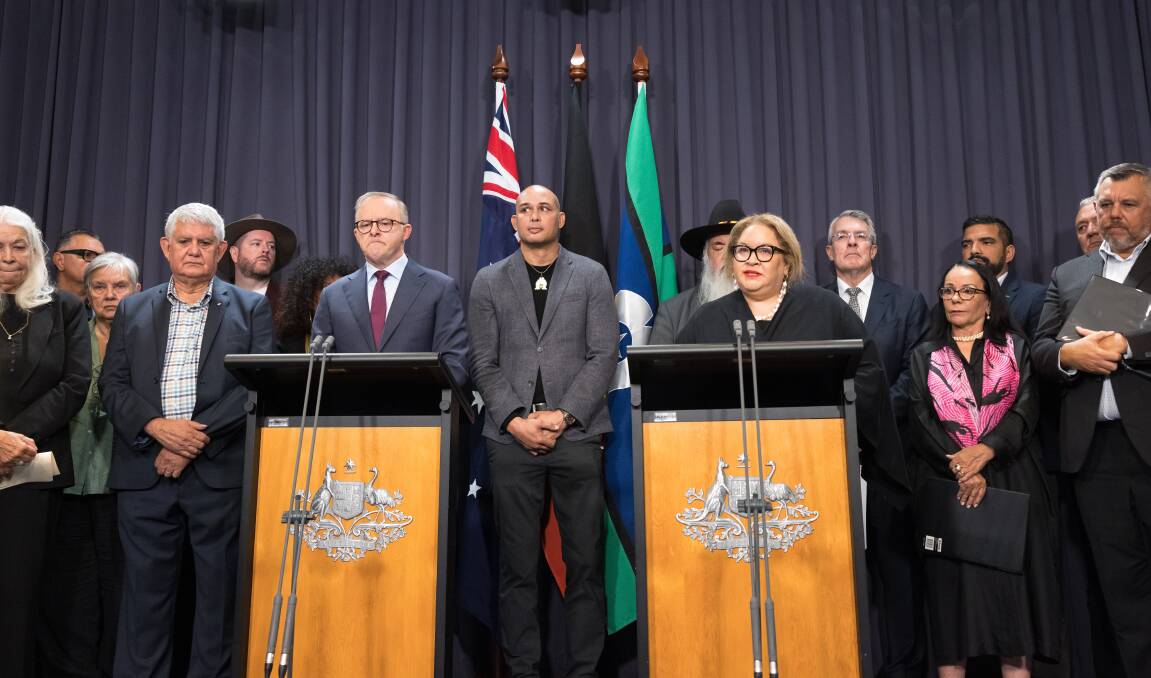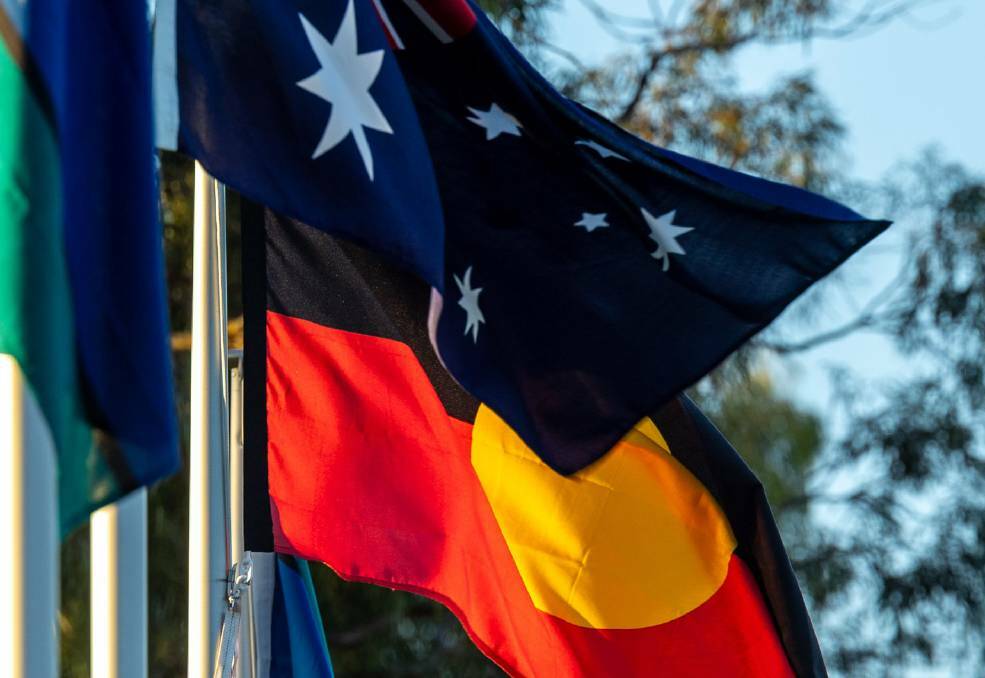Given the trend in the polls, it is time to look into the abyss. A "No" vote on the Voice, aided and abetted by misinformation and political opportunism fuelling uncertainty and creating a false sense of risk, is possible and perhaps likely.
Subscribe now for unlimited access.
$0/
(min cost $0)
or signup to continue reading
The real risk is not the confected risks outlined by some opponents of the Voice, but that the present dysfunctional processes will continue unabated.
Fourteen years after the commencement of Closing the Gap, the Productivity Commission reported in June this year that of the 20 targets listed, eight were not on track, four had worsened, four couldn't be measured and four were 'on track" but two of the latter at least, young people in detention and employment, were nothing to write home about. Neither life expectancy nor healthy birthweight were on track.
Each year a new progress report is released and the Prime Minister, and others, stand up in parliament and bewail the lack of progress. From time to time a new "plan" or a new "implementation" plan is released, but in reality, nothing much changes.
Not surprising really as most of the 'plans' haven't been plans in any meaningful sense, lack any analysis of what funds and services would be required to achieve the targets, and have associated management processes that are lost somewhere between dysfunctional and non-existent.
It need not have been this way. The National Aboriginal Health Strategy (NAHS) was produced in 1989 by representatives of the Commonwealth, all state and territory governments, and nine Aboriginal community representatives, and chaired by the legendary Naomi Mayers, CEO of the first Aboriginal Medical Service.
The Strategy set out in detail the roles and responsibilities of the relevant state and Commonwealth government agencies, the health and environmental system infrastructure required, training and educational needs, how to tackle each of the specific major health issues, mental health, domestic violence, child abuse and neglect, maternal and child health, health promotion, monitoring and evaluation, research needs and more. It was all there, more than 200 pages of what needed to be done.

The Strategy was grounded in Aboriginal holistic concepts of health, self-determination, emphasised the needs for broader societal as well as health system changes and the central role of Aboriginal community controlled organisations. It was endorsed by every Australian government in 1990.
So what happened with this seminal piece of work? The official evaluation of the Strategy in 1994 found that it was never effectively implemented, the National Council of Aboriginal Health which was supposed to oversee the implementation of the Strategy lacked governmental support, the Commonwealth's objectives were simply unobtainable with the then current and projected levels of funding, and that large scale national affirmative action was required to achieve equity.
It stated that: "The difficulty lies in the living environment and the lack of political will to make the financial investment necessary to achieve equity".
Sadly, that is almost as true today as it was then. A succession of outstanding Aboriginal leaders has tried to work with governments to address the issues identified in 1989. In 2005, Tom Calma, released the 2005 Social Justice Report which introduced the concept of Close the Gap.
Commissioner Calma brought together every Indigenous and non-Indigenous organisation with an involvement in Indigenous health to draw up a set of targets to Close the Gap. The targets covered partnership and had broadly similar content and overarching principles to the original NAHS. All relevant national organisations joined with one exception - the Commonwealth government declined to participate.
As outlined below, this turned out to be a strategic error as subsequent Commonwealth-led efforts lacked effective partnerships with Aboriginal and Torres Strait Islander peoples, did not interact sufficiently with service delivery providers and lacked the fundamental skills required to plan and deliver programs required to achieve the national targets.
With the election of the Rudd government things changed and for the better. National targets were adopted by all Australian governments (COAG) in 2008 and significant new funding provided across health, education, housing, early childhood development, and for remote areas.
The National Indigenous Reform Agreement provided a platform for joint action by state and Commonwealth governments. Then the bureaucracy got involved and developed a succession of 'plans'. Participation of Aboriginal and Torres Strait Island people in these various plans was on an unequal footing with floors of public servants, too often lacking in planning and service delivery skills, churning out plans lacking specification of funding and service requirements. Implementation was a word rather than a reality.
It was not until 2013 that the National Aboriginal and Torres Strait Islander Health Plan (NATSIHP) 2013-23 was released. This document was anything but a plan, but promised the subsequent development of an implementation plan. Frustrated by the government processes, the National Aboriginal Community Controlled Health Organisation (NACCHO) released its own 10 Point Plan for 2013-30.
This plan encompassed Aboriginal health leadership, partnership, health system reform, financing, workforce, infrastructure, accountability, monitoring and evaluation, and research and data - many of which essential elements were sadly lacking in the Commonwealth-led efforts. It was largely ignored by government.
The Commonwealth-led Implementation Plan was duly released in 2015 but was unfunded and no more of a proper implementation plan than the NATSIHP was a health plan. Key elements such as mapping health needs, and workforce and service capacity, and development of a core services framework were mentioned but simply didn't happen.
Yet again, it was mainly words but not action. A Review by HREOC of Close the Gap in 2018 noted that an effective health equality plan was not in place until 2015 and had never been funded, and "there was no complementary systematic focus on building primary health care capacity according to need, particularly through the Aboriginal Community Controlled Health Services and truly shifting Aboriginal and Torres Strait Islander health to a preventive footing rather than responding 'after the event' to health crisis".
Most importantly, "the Closing the Gap Strategy - a 25-year program- was effectively abandoned after five years ... This is because the 'architecture' to support the Closing the Gap Strategy (national approach, national leadership, funding agreements) had unravelled by 2014-2015". Depressing and all too redolent of the 1994 evaluation of the NAHS.

Subsequent annual Closing the Gap reports showing far too little progress, were tabled year after year, but the lack of progress did not lead to rectification of the fundamental issues first identified in the NAHS evaluation in 1994.
In 2018 COAG, spurred on by efforts led by another outstanding Aboriginal leader, Pat Turner, committed to forming a genuine partnership with Aboriginal and Torres Strait Islander people to finalise the Closing the Gap Refresh. In 2019 the Partnership Agreement on Closing the Gap 2019-29 was signed. Finally in 2021 all parties provided their implementation plans to the Joint Council on Closing the Gap.
However, the recently-released Productivity Commission Review of the National Agreement on Closing the Gap found that "current implementation raises questions about whether governments have fully grasped the scale of change required to their systems, operations and ways of working to deliver the unprecedented shift they have committed to" and "actions often focus on the 'what' with little, if any, detail on the 'how' or the 'why'.
"There is, for the most part, no strategic approach that explains (and provides evidence for) how the initiatives that governments have identified will achieve the fundamental transformation envisaged in the Agreement."
While progress has been made, none of the initiatives have adequately addressed core issues such as needs-based funding, where the essential concept is that Aboriginal and Toirres Strait Islander people should receive the same level of funding as anyone else in the population with equivalent need - no more and no less. Nor to this day has there been an analysis of what training, funding and services would actually be required to achieve the targets - all elements in proper planning.
As far as predecessors to the proposed Voice, various national bodies came and went. Amongst other bodies, the National Aboriginal Consultative Committee ran from 1973-77 and was followed by The National Aboriginal Conference (1977-85). The Aboriginal and Torres Strait Islander Commission was established in 1990 and abolished in 2005, followed by the National Congress of Australia's First Peoples from 2009-19.
After more than 30 years of national policy failure, stop-start advisory processes, bungled implementation and glacial progress in addressing inequities in health, education, housing, employment, justice and other fields, is Australia really going to vote for more of the same when it is clear what needs to change?
READ MORE:
If nothing else has been learnt, it is that non-Indigenous people do not have the answers and it is Indigenous people themselves who have long since identified what needs to be done - through the NAHS, the National Indigenous health Equity Targets, the NACCHO 10 Point Plan and, at a practical level, through the establishment of a national network of Aboriginal Community Controlled Health Services which, though underfunded, have been shown to outperform mainstream services. Crucially, stop-start processes don't and won't work.
The Voice must be enshrined in the Constitution to ensure permanence and though there is no guarantee that governments will listen, the Voice would carry more weight.
This is not some kind of theoretical exercise without real world consequences. More of the same means more Aboriginal and Torres Strait Islander people dying in their 30s, 40s and 50s of preventable conditions.
It means more unnecessary deaths in early childhood, children with hearing defects, too many adults hooked up to dialysis machines and more. It means too many children not learning to read and adults unable to achieve their potential, continuation of unacceptable levels of poor housing, high suicide rates and imprisonment rates that are off the planet.
And internationally, more of the same leaves Australia with a taint of hypocrisy when it speaks of human rights issues elsewhere and a lingering suspicion that our legacy in Aboriginal and Torres Strait Islander issues diminishes us as a people and as a country.
We know that there is clear evidence that much greater progress can be achieved. Surely by now, we can learn from experience of what doesn't work and operationalise what does.
It means listening to an Aboriginal and Torres Strait Islander Voice enshrined in the Constitution and a fundamental reform of government processes. Amongst other essential skills, this will require agencies to finally recruit or train staff with the right skills and experience in proper planning and service delivery, and to place Aboriginal and Torres Strait Islander people in leadership positions.
After almost 35 years of disappointing progress, real change is finally possible if Australia makes the right choice on the Voice referendum.
- Ian Ring AO is an occasional commentator and former academic and public servant.

